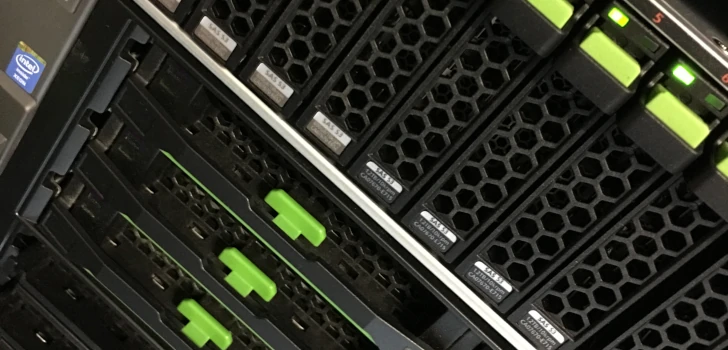
June 30, 2025
When buying a service, you’re not just buying what’s on the label.
You’re buying into someone else’s business model.
This aspect is now becoming even more relevant, considering that many times, when buying a product, you are also buying a service with it since there are more and more hybrid products.
If you don’t understand how your provider is structured and how it makes money, you will not fully understand your relationship with them.
And you’re more likely to get blindsided.
Read More 
May 31, 2025
In the coming couple of weeks I’ll be heading to the Common Europe Congress (CEC2025), Flock 2025, and DevConf.cz 2025, some of the best community-driven events in the ecosystem.
If you’re around, let’s catch up and share stories over coffee!
Common Europe Congress 2025 (Gothenburg, June 2–4)
The Common Europe Congress is the largest educational convention for IBM Power users in Europe.
This year it’s taking place at the Gothia Towers in Gothenburg, Sweden.
I’ll be there from June 2nd through the 4th, and I have two sessions lined up:
Read More 
April 30, 2025
If you’ve followed my posts over the years, you know I prefer clean solutions to less clean ones for my home lab (more to come on this!).
Over the past year, I settled on a pattern that gives me the isolation of Kubernetes Namespaces without any of its weight: one private Podman network per application, plus Traefik in a shared “DMZ” network that terminates TLS and forwards traffic where it needs to go.
Read More 
March 31, 2025
For a while now, I’ve been looking into optimizing and reorganizing some of the infrastructure that powers my self-hosting services.
After evaluating a few alternatives, Scaleway’s Dedibox lineup caught my attention: it is a European company with good hardware and decent pricing.
However, as with every good solution, it is not perfect.
Scaleway does not provide Fedora as an OS option for their Dedibox machines.
They offer a decent selection, including Rocky Linux, Debian, and Ubuntu — but no Fedora.
Now, if you know me, you know that Fedora is not just my distro of choice — it’s the one I trust for both personal and professional projects.
Read More 
January 31, 2025
The next few days are shaping up to be packed with open-source goodness!
I’ll be heading to CentOS Connect, FOSDEM, and CfgMgmtCamp, three of the best events in the ecosystem.
These conferences always include a great mix of technical talks, hallway conversations, and spontaneous meetups with friends—both old and new.
If you’re around, let’s catch up!
CentOS Connect (Brussels, January 31)
Although the event run yesterday and today, I’ll only be able to attend today.
CentOS Connect is a small but incredibly valuable event where the wider CentOS community (Fedora, CentOS, and all the Enterprise Linux distros) meets to discuss the space’s present and future.
It’s a great opportunity to meet contributors, learn about upcoming changes, and exchange ideas with people who shape the CentOS ecosystem.
I really like this event because its atmosphere is similar to Flock: very casual and more like a friends’ gathering than a conference.
Read More

December 31, 2024
Although the definitions of Open Source are related to specific software characteristics (i.e., the license), the reality is much more complex.
Open-source is way more related to a social contract that the software’s creator and its users morally sign than the definition might lead you to believe.
This social contract’s key aspect concerns the software’s current license and the licenses of future versions.
This is because although users of open-source software usually do not pay to use it, they incur high costs to do so.
Examples of those costs are training costs and potential costs to replace a certain technology should it become unavailable in the future.
Read More 
November 30, 2024
I often talk with people about Service Level Agreements (SLAs) in public cloud contexts, and I discover that their idea of what those SLAs are is often distorted.
I believe SLAs need to be approached with a healthy dose of skepticism.
In reality, they often provide little meaningful recourse when things go awry.
There are two big issues, in my opinion, with the SLA provided by many companies, including the hyperscalers:
Read More 
October 31, 2024
We have had Nebula VPN within the Fedora repositories for a couple of years.
A couple of months ago, I changed the default systemd service unit.
More specifically, this is the change:
-ExecStart=/usr/bin/nebula -config /etc/nebula/config.yml
+ExecStart=/usr/bin/nebula -config /etc/nebula
Although the change is only a few characters, this change allows for a much more flexible use of Nebula.
Before this change, the configuration could only be placed in the config.yaml file.
After this change, all YAML files in the folders will be read, merged, and used as configuration.
Read More 
September 30, 2024
Recently, I heard a pitch from a public cloud company.
Among other characteristics, a key aspect they stressed is that they are the cheapest cloud.
This aspect struck me.
Not because I believe it is or is not, but because I’ve heard many companies pitch themselves as the cheapest cloud over the years.
I asked the CTO if they were foreseeing consistent and planned cuts in the pricing every year or so.
The CTO’s answer was very sensible but negative on the specific point.
Later the same day, I was thinking more about my interaction with that CTO, and it became clear to me why pitching to be the cheapest cloud is not a good idea.
Read More 
August 26, 2024
This summer, I found myself multiple times reading out-of-office emails.
Actually, this is not a new phenomenon: it has happened every summer since I started working.
Obviously, it also happens outside the summer, but it is far easier to notice it during the summer.
I think the majority of people should not configure an out-of-office replyer.
By recipient
Many people might write to you and receive an out-of-office email if you have set up an out-of-office replayer. Let’s analyze the various personas that might send you emails and whether the out-of-office message makes sense for them.
Read More 








